Inspired by plant lists and lectures by William Cullina, Head of the Coastal Main Botanical Gardens - check out his website:
www.williamcullina.com
Sassafras (Sassafras albidum) can rival even sugar maples in the beauty of its fall display. In the shade, the foliage becomes an intense golden yellow. When the tree is in more sun, leaves become scarlet, orange, and maroon. Sassafras is an opportunistic tree found commonly along unmanaged fence lines and power line right of ways where it can compete with larger trees. It sprouts readily from stumps and the sprouts grow rapidly, adding up to 3-4 feet in height each year for the first ten years. You may have never even seen sassafras flowers in early spring – but they’re a good nectar source for early pollinating insects.
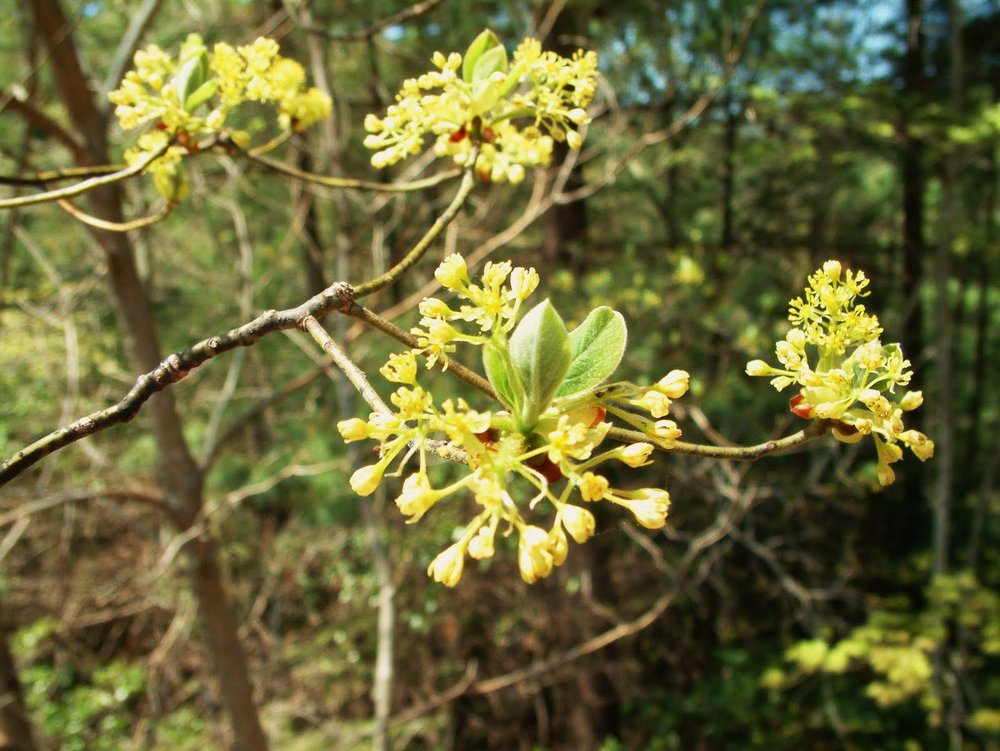
Sassafras flowers in early spring

Sassafras fall color
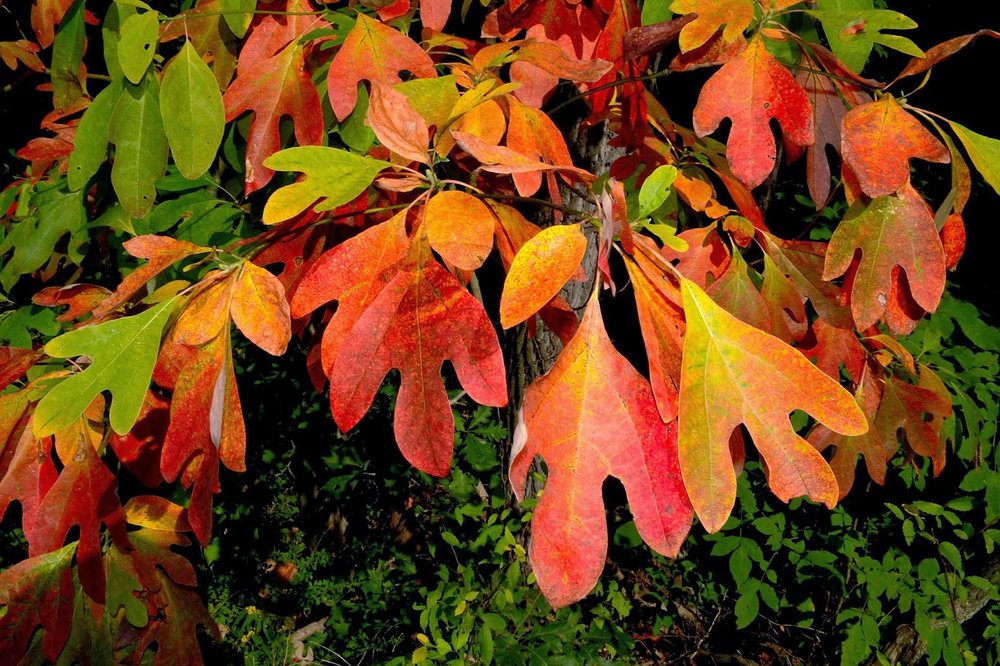
Sumac
There are two types of sumac that are nice additions to the landscape if you have good sun. One is ‘Gro-Low’ fragrant sumac (Rhus aromatica). ‘Gro-Low’ is a vigorous spreading groundcover (up to 2 ft tall with a spread of up to 8 ft), making it an excellent choice for stablizing a bank or smothering weeds. It has interesting fruits and a gorgeous orange-red fall color, and is deer resistant.
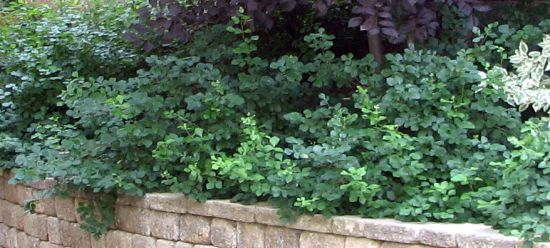
Rhus aromatica 'Gro-Low'
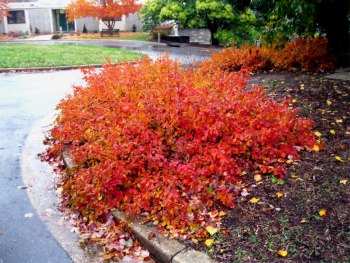
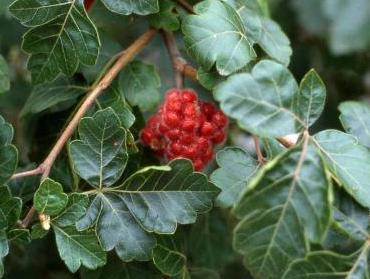
Rhus aromatica fruit
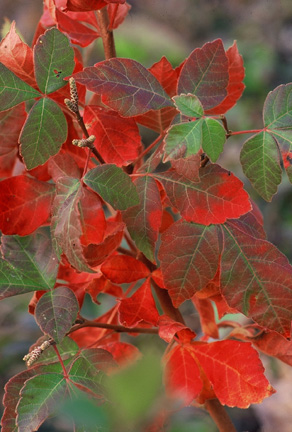
The other is ‘Tiger Eyes’ staghorn sumac (Rhus typhina ‘Tiger Eyes’ or ‘Bailtiger'), a dwarf, golden-leaved cultivar that typically matures to only 6’ tall and wide. It was discovered in a cultivated nursery setting as a whole plant mutation of R. typhina ‘Laciniata’ and is considered to be superior to both ‘Laciniata’ and the species because of its dwarf size, quality yellow foliage and minimal suckering. Deeply dissected compound leaves emerge chartreuse in spring, but quickly mature to bright yellow. Fall foliage is a striking mixture of orange and scarlet. It performs best in good sun. Since it can tend to become a bit leggy and spreads via suckers, its a good candidate for the back of the border, a naturalized stream bank or the wild garden (but not so much as a specimen).
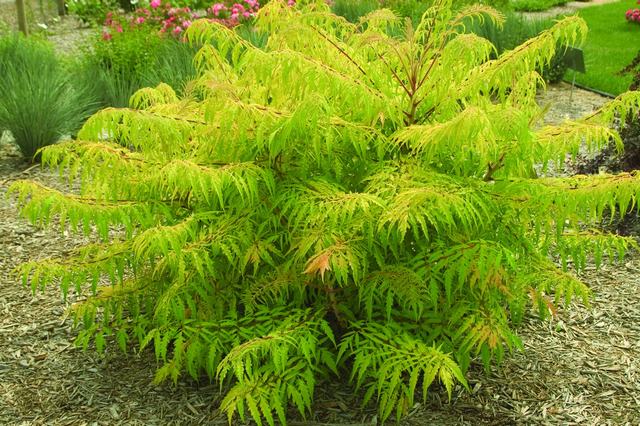
Rhus typhina 'Tiger Eyes'
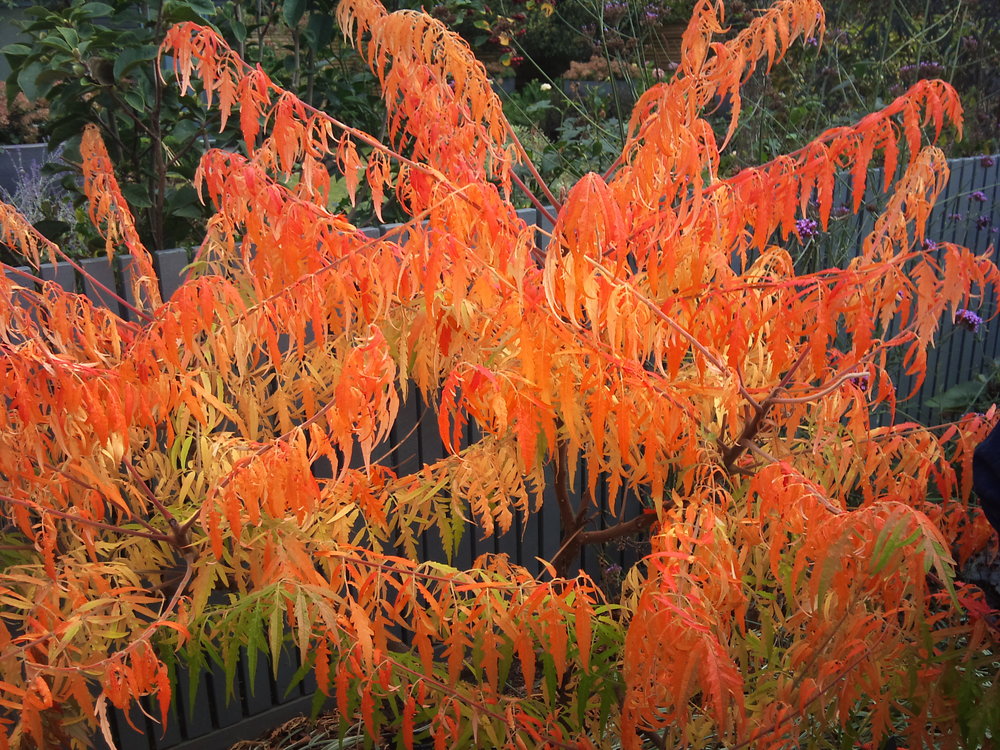
Rhus typhina fall color
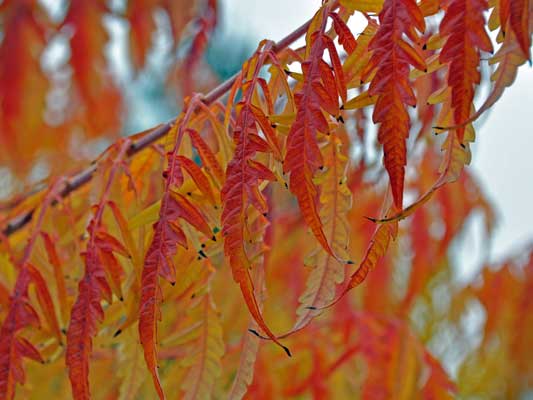
Wavy Hair-grass (Deschampsia flexuosa) is a clump-forming cool-season native grass that is not too large, takes some shade and has relatively showy flowers - it can fit into a mixed border quite well without overwhelming it. Like most ornamental grasses, it prefers well-drained soils. Its foliage is semi-evergreen in a mild winter. It's native to dry open woods, slopes, fields, grasslands and open areas, forming a low, dense tussock of very thin, arching green grass blades up to 2’ long. Flower stems rise in summer above the foliage mound bearing wide, airy panicles of tiny, purple to bronze flowers which form a cloud over the foliage that is attractive when backlit. Flower panicles turn gold after bloom as the seed ripens.
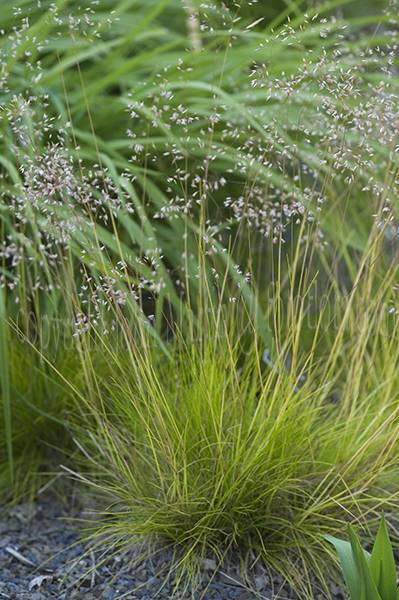
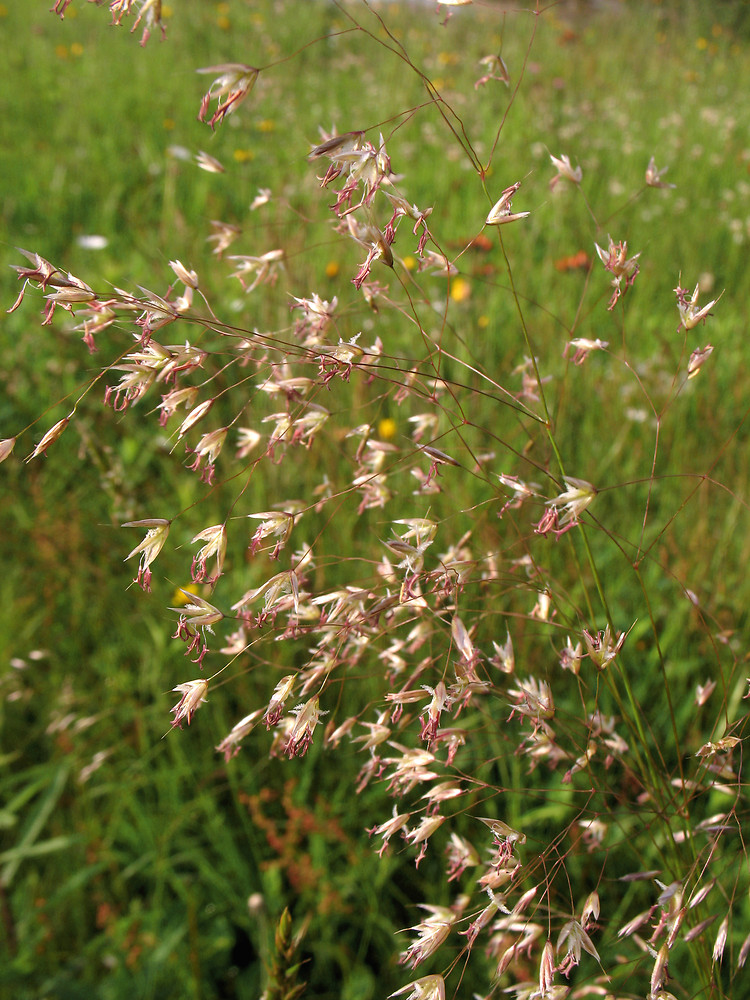
Smooth Witherod (Viburnum nudum) is native to low woods, swamps and bogs in the east and southeast, from Connecticut south to Florida and Louisiana. It can tolerate a wide variety of light conditions, from full sun to part shade and can also tolerate boggy conditions – a good candidate for a wettish area in the landscape. It has showy white flowers in spring – they don’t smell very good though! (For my nose, its definitely one of the “stinky” viburnums, but others don’t perceive it as smelling particularly bad). Flowers are followed by clusters of berries in late summer that change color as they ripen from light pink to dark pink to blue to purply-black. For best cross-pollination and subsequent fruit display, plant shrubs in groups rather than as single specimens. The best cultivar is ‘Winterthur’ – now fairly commonly available in the Nursery trade - a compact version, growing to about 6’ X 6’, with a reliably beautiful fall foliage color – maroon, dark red, purple. ‘Winterthur’, an introduction of Winterthur Gardens in Delaware, was a winner of the Pennsylvania Horticultural Society Gold Medal Award in 1991 – I guess that qualifies it as “tried and true” at this point!
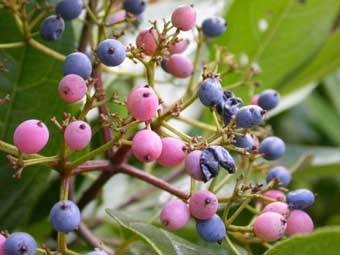
'Winterthur' berries ripening
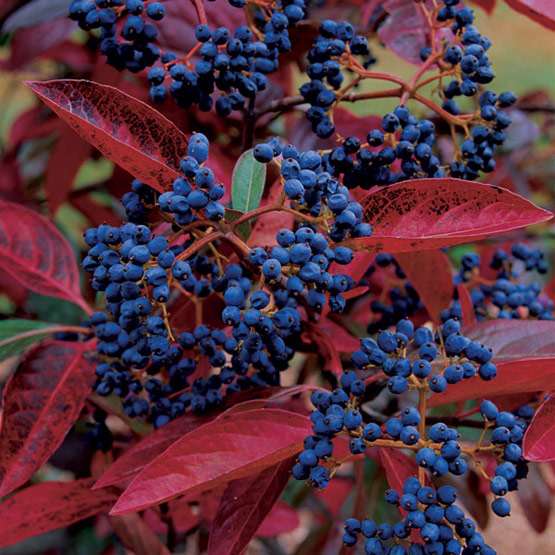
'Winterthur' ripe berries look beautiful with the fall foliage color